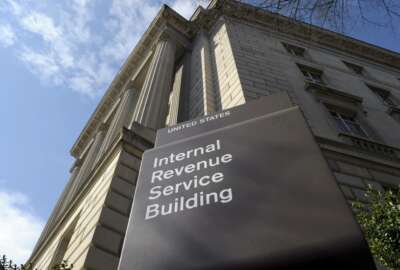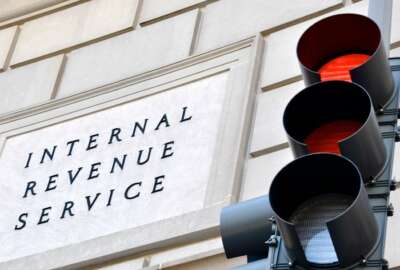House committee supports higher IRS budget to reverse ‘chronic underfunding’
The House Appropriations Committee is planning to give the IRS a topline budget next year in line with the Biden administration’s multi-year plan.
The House Appropriations Committee is planning to give the IRS a topline budget next year in line with the Biden administration’s multi-year plan to beef up the agency’s workforce and expedite the replacement of legacy IT systems.
The committee’s draft of the Financial Services and General Government spending bill, released Wednesday, would give the IRS $13.6 billion in fiscal 2022 — more than a 14% increase from current spending levels.
The IRS would get $305 million for its IT business systems modernization — a more than 35% increase — to modernize the agency’s legacy systems and improve IRS web applications.
The agency would also get $2.9 billion for taxpayer services — more than a 15% increase from current levels. The IRS would also get $5.8 billion for its enforcement operations — more than a 10% increase above enacted levels.
Committee Chairwoman Rosa DeLauro (D-Conn) said she was “particularly proud” of the spending bill’s increases to rebuild IRS resources. The increased spending, she added, would improve taxpayer services, bolster its enforcement and support expanded child tax credit payments that will start going out to households later this summer.
Financial Services and General Government Subcommittee Chairman Mike Quigley (D-Ill.) said the spending bill would fund the IRS “at a much-needed level” and give it the resources needed to shrink a growing tax gap.
“Critically, this bill takes steps to strengthen the IRS so that Americans can be confident that everyone is paying their fair share — including our wealthiest citizens and biggest corporations,” Quigley said.
IRS Commissioner Chuck Rettig and industry members of a federal advisory committee focused on improving the agency’s online services agree the proposed budget increase is necessary for the IRS to meet legislative mandates to improve taxpayer services
Rettig, speaking at a virtual session of the Electronic Tax Administration Advisory Committee (ETAAC), said the plan outlined by the White House and advanced by Congress would give the IRS the resources it needs to meet the goals of the Taxpayer First Act and deliver on pandemic relief programs.
“We are, I think, in a good place with respect to Congress and the budget proposals. The administration has been just amazing in the support of the Internal Revenue Service and the acknowledgment of the employees of the Internal Revenue Service and what’s transpired during the past year,” he said.
Rettig said the higher budget would allow the IRS to fully staff and reopen Taxpayer Assistance Centers throughout the country. Between this in-person help and the online portal the agency recently stood up, Rettig said taxpayers would have multiple channels for assistance when the expanded child tax credit payments begin in July.
“People not only will be able to use the online portals, people will be able to walk into an IRS office, people will be able to call in to interact with us with respect to their advanced CTC,” Rettig said.
The budget increase would also give the agency resources to address longstanding challenges. The ETAAC, in its annual report to Congress released Wednesday, outlined budget, IT modernization and data security as some of the top constraints the IRS faces.
ETAAC Chairman Gene Salo, vice chairman of the Board of Directors at CERCA, an association of tax industry firms, said the pandemic highlighted how “chronic underfunding” of the IRS has resulted in lower staffing levels and out-of-date IT that limits the agency’s ability to cope with its growing workload.
“As a result, the IRS made difficult processing choices in the middle of the filing season to provide Americans with their funds as quickly as possible,” Salo said.
ETAAC member Courtney Kay-Decker, former director of the Iowa Department of Revenue, said the committee’s recommendations focus on internal processes and technologies that aren’t apparent to the taxpayer but would require significant resources to implement within the IRS.
“Our goal is to say that we have processes and technologies in place early in the process so that down the road when something happens to a taxpayer, we’ve anticipated and corrected the challenges so that the number of people who actually need to interact with the IRS is decreased. And when they do need to interact, that interaction is less challenging,” Kay-Decker said.
ETAAC members noted that none of its recommendations would be possible for the agency to implement without additional funding, especially given its growing workload during the COVID-19 pandemic.
ETAAC member Larry Gray, a certified public accountant, said the IRS continues to struggle with a backlog of 2019 tax returns. While the agency caught up on opening its backlog of mail, Gray said the IRS has not yet responded to millions of pieces of mail correspondence, resulting in returns being held up for weeks or months.
ETAAC member John Kreger, the director for product management at Sovos, an automated tax compliance software company, said the industry has seen continued improvements to IRS systems in recent years, even as the volume of tax filings increases.
Copyright © 2024 Federal News Network. All rights reserved. This website is not intended for users located within the European Economic Area.
Jory Heckman is a reporter at Federal News Network covering U.S. Postal Service, IRS, big data and technology issues.
Follow @jheckmanWFED






